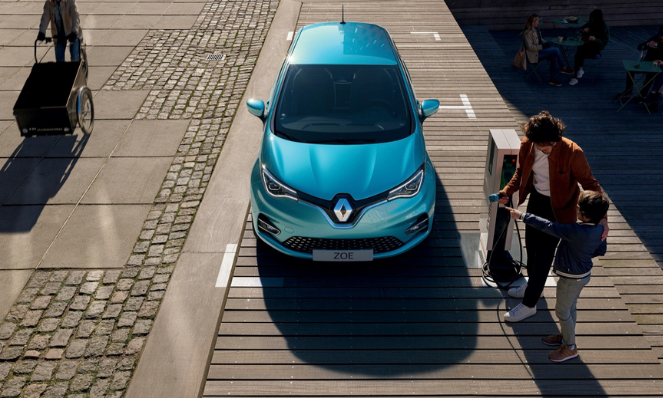
It is fair to say that electric vehicles come with a lot of terminology and acronyms that are not always easy to work out. With so many things to get your head around, we know it can hard for newcomers to tell their OLEVs from their PHEVs.
With that in mind, our handy jargon buster is here to help you get to grips with some of the latest terminology and need-to-know terms!
Read on for everything from N-Z or click here to read our guide for everything from A-M. Let us know if we have missed any out!
N
Net-zero carbon – Term used to say something is free from carbon emissions, often known as being carbon neutral.
O
OLEV – The Office of Low Emission Vehicles (OLEV), a team within the UK Government working to support the take-up of low emission vehicles such as hybrids and EVs. Now known as OZEV.
OZEV – The Office for Zero Emission Vehicles (OZEV), formerly OLEV, is a team in the UK Government which supports the movement towards zero emission vehicles such as EVs.
P
PEN-fault technology – PEN stands for Protective, Earth and Neutral conductor. PEN-fault technology identifies when there is a problem with the PEN conductor and prevents an electric shock. This is normally achieved by installing an additional earth rod, however, some EV charge points have built-in PEN-fault technology eliminating the need to install additional earth rods.
PHEV - Plug-in Hybrid Electric Vehicle – this is a type of hybrid EV that allows you to charge your battery via a charge point, the Internal Combustion Engine (ICE) or regenerative braking. Usually, PHEVs will run from the battery until the charge is low or up to a certain speed, the car will then automatically switch to using fuel from the ICE.
PiCG - Plug-in Electric Car Grant, a UK government grant which enables consumers to get up to £1500 off the price of a brand new low-emission car. You can find out more about the grant here.
Public charge points – A charge point available to any member of the public to charge their EV or Hybrid. There are typically two types of public charge points: Fast and Rapid. Fast chargers are AC chargers that have power outputs between 7kW-22kW. Rapid chargers are often referred to as DC chargers and these are the quickest to charge with power outputs between 25kW and 99kW (typically 50kW). Fast chargers usually take between 2-8hrs for a full charge. Rapid chargers usually take around 30-40 minutes for a full charge. Most public charge points require the driver to have an app or a pre-registered Radio Frequency Identity Card (RFID) in order to pay for the charging.
R
Range Anxiety - Term given to the fear of running out of charge while driving a plug-in electric vehicle.
REEV - Range-extended Electric Vehicle – A REEV, also known as a REX or Extended-Range Electric Vehicle (E-REV) is similar to a Plug-in hybrid. It has a plug-in battery pack, electric motor and an internal combustion engine. However, rather than the car automatically switching to fuel from the ICE when the battery gets low, once the battery reaches a certain level, a smaller ICE powers a generator that supplies the electric motor further extending the vehicle's range.
RPH - Range per hour - Miles of range per hour of charge.
Rapid charging – A rapid charge is typically anywhere between 50kW and 150kW output, compared with Fast which is between 7kWh – 22kWh. Rapid chargers are one of the fastest ways to charge your EV, especially when on the move. These are usually found at service stations and charge parks along motorways in the UK. They usually require an app or debit/credit or RFID card to pay for the charge.
Regenerative braking – Regenerative braking uses the energy generated from braking and turns it into electricity which is used to recharge the car’s battery. EV drivers also often refer to ‘single pedal’ driving because regenerative braking avoids the need to use the brake pedal (particularly in urban areas).
S
Single Phase charger – With regards to, phase refers to the power supply. A single-phase charger can charge your EV at a maximum of 7.4kW.
Slow Charging – A slow charge typically has an output of up to 3kW. Slow chargers are becoming less common due to the uptake in 7kWh fast chargers. Another form of slow charging is directly through a typical 13amp 3 pin mains socket, often known as granny charging.
Smart charging – A smart charger is an EV charger that is connected to the internet. This enables the charger to communicate with your car, other EV chargers and the grid. This optimises cost and emissions so by automating charges to happen when energy is cheapest and greenest. Smart chargers are usually controlled by an app such as the equiwatt EV Smart Charging app.
SOC - State of Charge, the equivalent of a fuel gauge for an EV.
T
Tethered – A tethered EV charger means that the cable is attached to the charge point.
Three Phase Charger – A Three-phase charger can charge your EV at a maximum of 22kW (vehicle permitting). They are more common on workplace and commercial buildings and more expensive than 3.6kW chargers more typically installed at domestic residences.
Top up Charging - The practice of plugging in your electric vehicle whenever you park up, making use of the time your car is not in use to add charge to your battery.
Trickle Charging - The slowest type of charging, usually reserved for long overnight charges at home. Usually provided by de-rated dedicated charge points or through a standard 3 pin plug.
Type 1 connector – An older type of charger that has been phased out in favour of Type 2. A Type 1 connector has a total of five pins alongside a clip to lock the charging cable in place whilst charging. Only a handful of older EV’s have the Type 1 connection type and almost all modern EV’s now have Type 2.
Type 2 connector – Also called a Mennekes plug, the current industry standard for an EV charge point connector. Unlike the Type 1 connector, the Type 2 connector has a total of seven pins.
U
UK 3 pin - The plug for a standard UK electrical outlet. 3 pin plugs can be used to charge some EVs via a granny charger. However, they lack the safety, speed and security features of a dedicated charge point.
ULEV - Ultra-Low Emission Vehicle, a term used to describe all vehicles that emit 75g/km or less of carbon.
Ultra-rapid charging - The fastest way to charge an EV. Ultra-rapid charging typical supply power between 150-350kW. There are a small number of ultra-rapid chargers in the UK, with Tesla’s Supercharger network being one of the most popular.
Untethered – Opposite of a tethered charger, an untethered EV charger does not have a cable hardwired to the charge point, instead the charger only has a socket. This offers more flexibility in terms of cable lengths and is able to accommodate both Type 1 and Type 2 EV’s. Most public charge points are untethered.
V
V2G - Vehicle to Grid, the process of sending excess power from your vehicle back to the grid during peak times. Enables EV owners who have leftover battery in their cars to send this energy back to the grid to help support the demand on the grid and maximise the use of renewable energy.
V2H - Vehicle to Home, allows owners to use their car’s battery like that of a home battery storage system, allowing two-way charging. Similar to V2G, excess power left in an EV battery can be diverted elsewhere. However, rather than sending it back to the grid, V2H allows the energy to be diverted to the EV owner's home.
W
WCS - The Workplace Charging Scheme, is a voucher-based scheme that provides eligible applicants with support towards the up-front costs of the purchase and installation of electric vehicle charge points. It is open to eligible businesses, charities, and public sector organisations in England, Wales, Scotland and Northern Ireland. You can learn more here.
Z
ZEV - Zero Emissions Vehicle, a vehicle that produces no tailpipe emissions. Sometimes known as a Zero tailpipe Emissions Vehicle or ZTEV.















